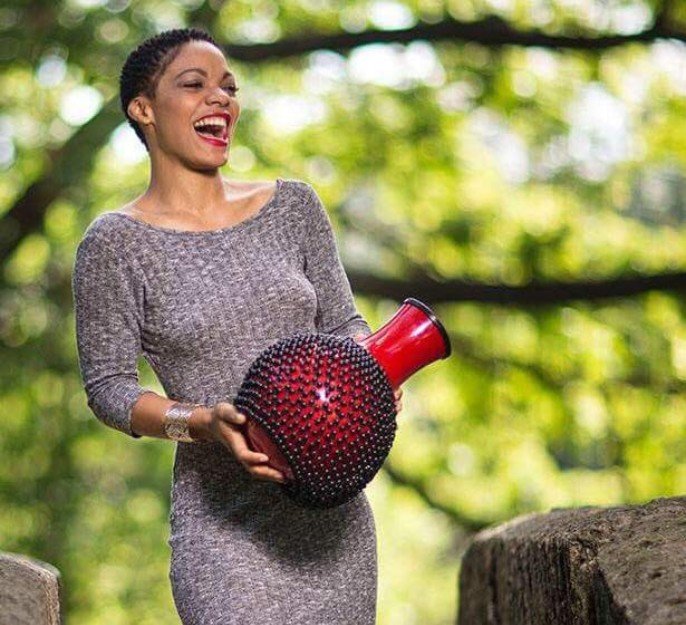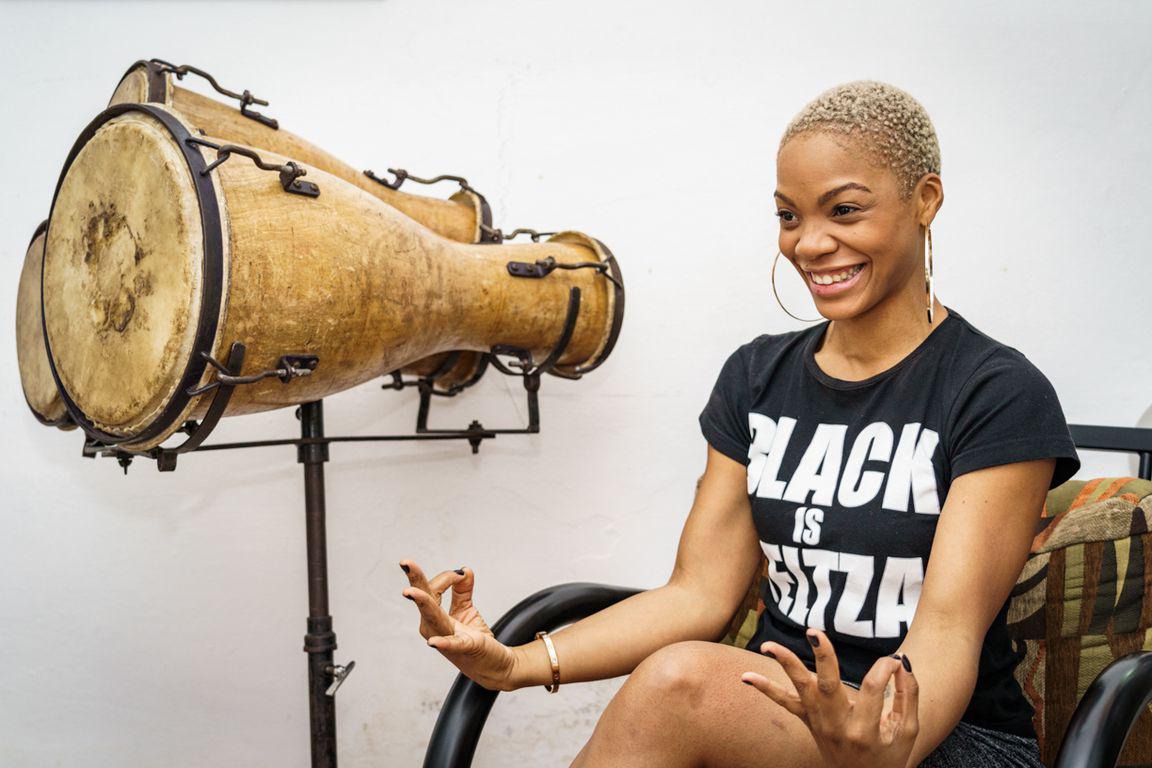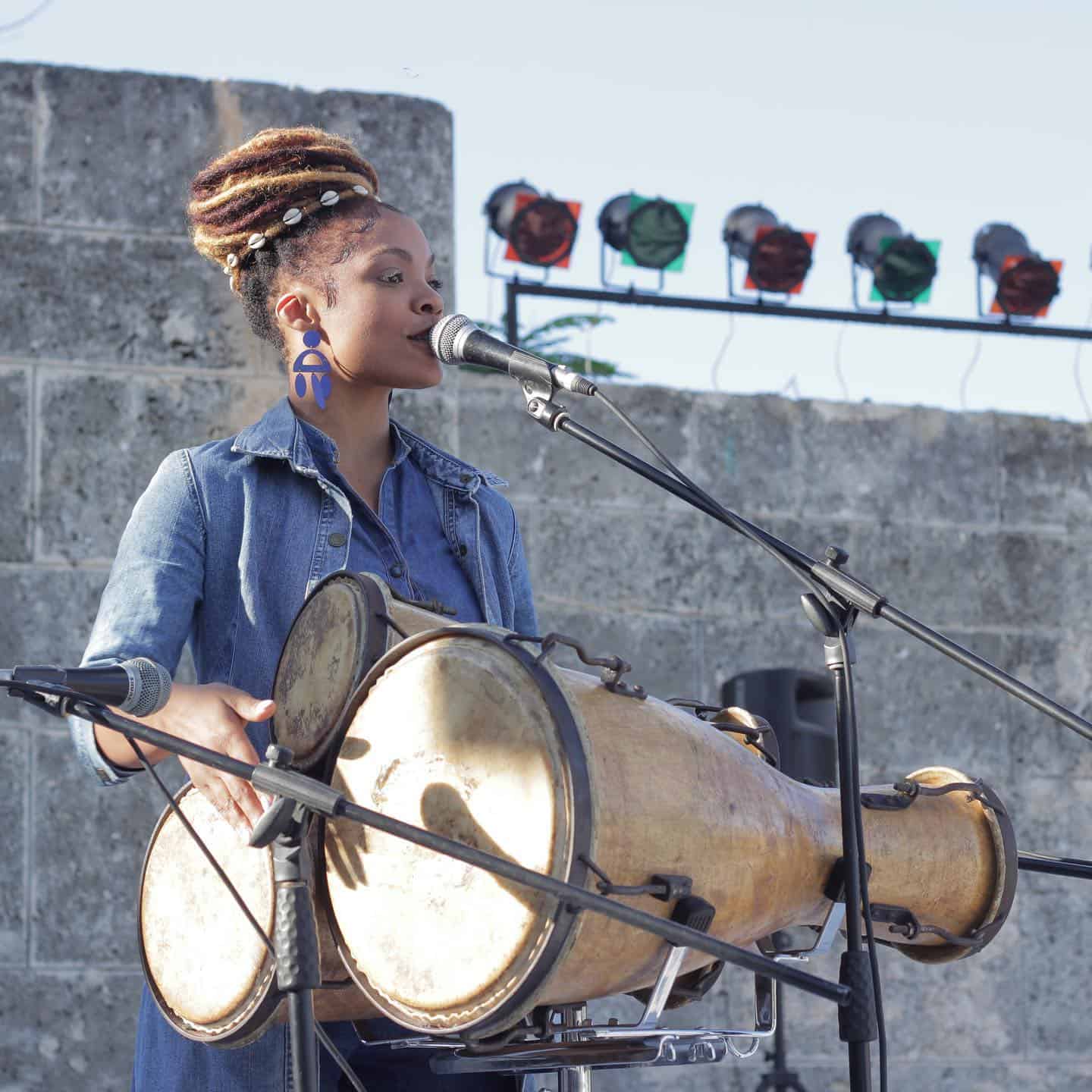
Three little words. But there is so much drama therein.
Less than a hundred miles below the USA, nestled on the northern periphery of the Gulf of Mexico, situated just below Florida, is where Cuba is located. In political terms, the island is older than the United States. However, its social relevance revolves around 1959 when the current Cuban government waged revolutionary war and took over.
Since then Cuban life has been caught up in a seemingly unending cycle, grappling with one after another confrontation and conflict with the U.S. on one hand, and internal shortages and contradictions on the other.
But amid all of that, Cuba continues. Although economically and politically pressed by foreign forces and beset my internal repressions, Cuba people continued, producing a resilient and profoundly beautiful musical culture.

Brenda Navarrete is representative of a modern Cuba. In a feature in the August 3, 2018 issue of Pride Magazine, Brenda delineates the origins of her love of percussion, as well as her goals in promoting Cuban culture.
I was around eight years old, and my sister said ‘What do you wanna do? Music? Sports?’ I loved music, and I wanted to be a percussionist, but she told me, ‘Percussionist? That’s a little strong, it’s a strong instrument’. I was hyperactive, and I loved to sing, but I wanted to play percussion – so she brought me to music school, I did a test and I was accepted. I spent 10 years of study, study, study – and now I’m here. Singer, percussionist, producer, dancer, composer, it’s all in the work. –Brenda Navarrete
Grounded in Cuban rhythms, Brenda’s expansive music now reflects world influences, particularly American jazz, soul and gospel. There was a time when women mastering percussion instruments was frowned upon. Early on while formally studying harmony and melody, Brenda decided to focus on rhythms and drumming. She is now considered a leading Cuban percussionist.

Brenda’s specialty is the Bata-drum set, which consists of three drums, often bound together. The Wikipedia reference notes that “In Cuba, the batá consists of a set of three tapered cylinders of various sizes. Iyá, the largest, is referred to as “mother drum”. Itótele, the middle one, and Okónkolo, the smallest, are called “father” and “baby”, respectively.”
“My objective is to promote the Cuban culture. Not ‘pure’ Cuban, as I mix with jazz, and now with reggae, with gospel – but to bring these Cuban rhythms to the world. More than myself as an artist, I want to promote the Cuban culture around the world. I love the Cuban people and energy so much. It’s not a rich country, but the riches of Cuba is found in our energy.” –Brenda Navarrete
